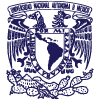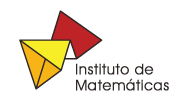Indirect Measurements and Quantum Trajectories
Institución: IIMAS UNAM
| Cuándo |
23/04/2015 de 10:00 a 11:00 |
|---|---|
| Dónde | Salón de seminarios Graciela Salicrup |
| Agregar evento al calendario |
|
We consider a quantum dot in a semi-conductor device \(\overline{P}\) (or a quantum cavity) and a train of probes sent to it. Each probe is sufficiently far away to any other in order to ensure they do not interact within each other and at most one of them interacts with the quantum dot at any given time. A projective measurement, corresponding to an operator \(X\), is applied to each probe, just after it interacts with \(\overline{P}\). This produces a density matrix valued stochastic process \(\{\rho_n\}_{n\in\mathbb{N}}\), where \(\rho_n\) represents the state in \(\overline{P}\) after \(n\) measurements occurred (the first \(n\) probes have been measured). Suppose that \(\mathcal{N}\) is an observable in \(\overline{P}\) whose Heisenberg evolution varies slowly as the time goes (this is a more realistic setting than the non-demolition situation in which it is assumed that \(\mathcal{N}\) does not change as the time goes). We prove that after some threshold value \(N_0\) (uniform with respect to the initial density matrix), the density matrices \(\rho_n\), for \(n\geq N_0\), are pure on the spectrum of \(\mathcal{N}\), up to a tiny error. Our results can be used to mathematically understand situations in the spirit of experiments of Haroche and Wineland (that led to the 2012 Nobel prize in physics), where \(\overline{P}\) consists in a quantum cavity and \(\mathcal{N}\) is the photon-number operator.
This is a joint work with Martin Fraas (LMU, Munich), Jürg Fröhlich (ETH, Zurich) and Baptiste Schubnel (University of Lorraine).

